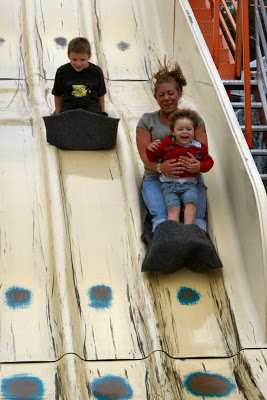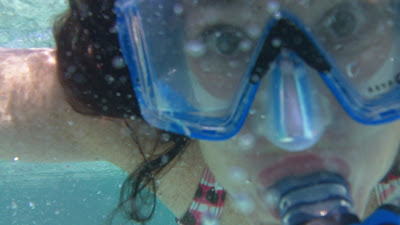 |
| Me making friends with Fear |
As some of you dear readers may recall, I decided to adopt a fearless approach to life in 2012. Trust me, co-writing a blog about nurturing courage in kids will force you to examine (in depth) the ways you may be both the brave and cowardly lion. Since I also currently treat both children and adults with anxiety, I thought it especially important to put into practice some of the approaches I’ve been encouraging my patients to adopt. Taylor Clark’s new book Nerve: Poise Under Pressure, Serenity Under Stress, and the Brave New Science of Fear and Cool (2011) also woke me up a little.
Clark’s research shows that currently the U.S. is ranked “the most anxious nation on the planet, with more than 18 percent of adults suffering from a full-blown anxiety disorder;” stress-based ailments costing “an estimated $300 billion per year in medical bills and lost productivity;” and our annual usage of anti-anxiety medications doubling from “$900 million to $2.1 billion” (p. 11). Clark also interviewed Dr. Richard Leahy, psychologist and anxiety specialist, who cautions that adults aren’t the only anxiety sufferers these days (something I, too, can attest): “The average high school kid today has the same level of anxiety as the average psychiatric patient in the early 1950s” (p. 11). Acceptance and Commitment Therapy specialists Steven Hayes, Jason Luoma, and Robyn Walser, in their therapy manual Learning ACT (2007), caution that one of the main contributors to anxiety is experiential avoidance. In normal speak: the more we avoid what we fear, the more anxiety develops. So, starting with identifying the things we’re afraid of and developing a plan to face those fears step-by-step is a good place to start boosting one’s courage capacity—and decreasing our generalized anxiety at the same time.
I mentioned in my New Year’s post (click here to read it) that learning to snorkel without panicking would be one of my “learn to live fearlessly” goals. Let me back up and explain a little. Four years ago, I joined the masses of North Americans dealing with anxiety and had my first official panic attack.
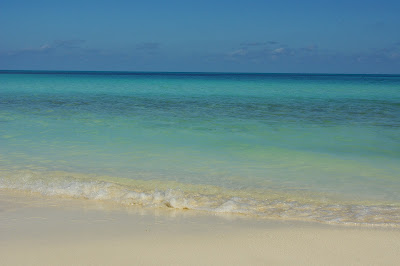 I was in the Caribbean on vacation with my family. We’d planned an excursion to what was touted as “Paradise Island” to snorkel for the day. I would agree that initially this small island, located in the middle of a turquoise sea an hour boat ride from any civilization, did seem pretty idyllic and relaxing. An hour into our snorkeling, however, my adventure plunged from a trip to paradise to one in hell.
I was in the Caribbean on vacation with my family. We’d planned an excursion to what was touted as “Paradise Island” to snorkel for the day. I would agree that initially this small island, located in the middle of a turquoise sea an hour boat ride from any civilization, did seem pretty idyllic and relaxing. An hour into our snorkeling, however, my adventure plunged from a trip to paradise to one in hell.
Shortly after my husband and I made our way on the outskirts of the coral reef surrounding “Paradise Island,” the wind picked up and an undertow current pulled us quickly further out into the ocean than we anticipated. In a matter of minutes we were half-way around a U-shaped coral reef, guideless, and with no knowledge about where the break in the reef was to safely take the short cut back to shore. I knew that swimming over a coral reef, as gentle as those coral branches appear swaying to the rhythm of the ocean undertow, was a very bad idea. Especially since the water was very shallow covering the reef that now separated us from the island shoreline. I’d seen those Google images of scarred bellies of stupid, clearly misinformed folks who’d chosen to do so.
As the current picked up, water started to fill my snorkel gear. My eyes were burning and I couldn’t see in my now-foggy mask. I’d also swallowed enough salt water to deregulate my breathing, officially ushering in my panic. The connection between body and mind is now firmly established. When the body begins to panic, mind follows suit–or vice versa. Panic felt like not being able to get a full breath, pounding heart, narrowed visual focus, and sounded like this in my head: “I’m going to die out here and my babies are on the beach ALONE!” As calmly as I could I yelled to my husband, “I’m not doing okay. We need to get in asap. I can’t do this! I can’t see the kids, they’re not were we left them! I think I’m panicking?” Ya’ think? My husband, as I’ve mentioned in previous posts, is a very calm individual. Some may even say unresponsive at times. He is not prone to anxiety nor does he multitask well, especially while snorkeling. He wasn’t concerned about the kids. He also thought it would be perfectly fine to swim across the reef whenever he felt like it. I, on the other hand, started waving madly for help. I was going to save us, even if he was too clueless yet to realize the kind of peril we were in!
We’d been reassured that if we found ourselves in trouble, the tour guides would see us waving our hands and immediately dispatch a boat to our rescue. So much for that! No amount of hand waving from increasingly watery depths while the ocean pushed us up against the sharp edge of the coral reef, combined with water-garbled pleas in both English and Spanish (impressive since I was panicking, remember), brought my rescuers. Once again, my husband/handsome prince turned into my rescuer. He screamed back at me to keep swimming. You have to scream at a person panicking. It’s the only way to get their attention as they are VERY distracted by fear! I quickly realized that my husband couldn’t carry me and that I’d have to make it back on my own steam–despite my failed attempts to cling desperately to him during the worst moments of panic. After letting go of my husband’s neck, I took off my mask and snorkel (letting them hang awkwardly around my own neck), and started swimming for my life. He just kept saying encouraging, if nonchalant, things like “You’ll be fine. We’re almost there.” Everyone needs a reassuring cheerleader sometimes, especially our kids–and big kids like me.
It took about 15 minutes of very focused, hard swimming to get back to the shore. I just focused on each next stroke and getting back to my kids. Two key tips to dealing with panic: focus on the present moment (reassure yourself that in this moment you are okay and all you have to handle is this moment) and identify a life-affirming goal that is truly important to you. A brown paper lunch bag is also a good thing to have on hand, but wouldn’t have helped me much to regulate my breathing in the middle of the ocean. So is reminding yourself that no one has ever died from a panic attack–it just feels like you could.
Cut to me clinging desperately to a nice Dominican man trying to help me ashore, me feeling extremely grateful to be alive, then me racing to hug my kids (once I finally found them ordering drinks at the snack bar, completing unaware how precariously close they had just been to becoming orphans!) And the answer is “No,” I would never again be so naive as to leave my kids on the shoreline while I go off for a “short” snorkel! Turns out, I’m more like those dum-dums who decide to swim over a coral reef than I’d like to admit.
I did lecture my kids later about the importance of sticking to our promise to stay where we leave them. As a parenting coach, I’m particularly aware of those times when we can lash out at our kids because we are afraid or when we’ve made a mistake and are looking for a scapegoat. Like the moment after our child lets go of our hand and jumps off the sidewalk curb, only to narrowly miss being hit by a car, and we pull them back into our care only to berate them for their foolishness instead of saying, “Oh, sweetie! I’m so grateful you are okay.” I’ve learned to make a sincere effort with my kids, especially when I’m feeling fear, to hug first (while taking a deep breath) and lecture last. In other words, connect then correct!
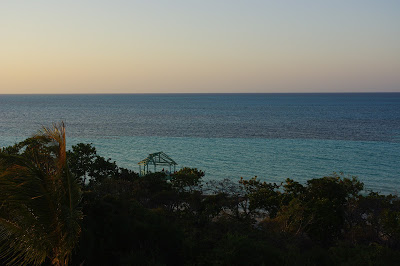 So, a few weeks ago in the midst of an East Coast winter storm, the Caribbean siren started calling my name again, beckoning me back to her ocean depths. I’m also a sucker for a great travel deal, which I happened to find last-minute. After booking the trip, I realized that I had manifested the perfect opportunity to follow through on my promise to face my fear of snorkeling. I initially thought I might even be able to try scuba diving on the trip (classic overachiever thinking). That is, until I called my younger brother who happens to be a former navy diver. He told me that only 7 of his class of 25 new recruits managed to complete his particular scuba training course. Oh. “Why’s that?” I asked. He explained that people either take to scuba or don’t. It has something to do with switching from being a nose to mouth breather, to start with. It also has a lot to do with whether or not you actually want to do it, like the water, and/or feel comfortable in generally uncomfortable, claustrophobic, fear-inducing underwater conditions. That gave me some pause. I thought, well I love taking baths. But then I remembered and confessed to my brother that since I was a little kid, I’ve always avoided learning to do the front crawl. I even had my mom write notes to my swimming instructors explaining that I wasn’t well on the days I had front crawl instruction. I managed to never learn the crawl and have only ever swum with my head above water. That really should have been my first clue that I may not be the most confident snorkeler, let alone a natural scuba diver. I also don’t particularly love the underworld, well not with the kind of passion that one of my young patients has who wants desperately to be a mermaid when she grows up! I did, however, want to develop some more physical courage. And model for my kids overcoming a fear.
So, a few weeks ago in the midst of an East Coast winter storm, the Caribbean siren started calling my name again, beckoning me back to her ocean depths. I’m also a sucker for a great travel deal, which I happened to find last-minute. After booking the trip, I realized that I had manifested the perfect opportunity to follow through on my promise to face my fear of snorkeling. I initially thought I might even be able to try scuba diving on the trip (classic overachiever thinking). That is, until I called my younger brother who happens to be a former navy diver. He told me that only 7 of his class of 25 new recruits managed to complete his particular scuba training course. Oh. “Why’s that?” I asked. He explained that people either take to scuba or don’t. It has something to do with switching from being a nose to mouth breather, to start with. It also has a lot to do with whether or not you actually want to do it, like the water, and/or feel comfortable in generally uncomfortable, claustrophobic, fear-inducing underwater conditions. That gave me some pause. I thought, well I love taking baths. But then I remembered and confessed to my brother that since I was a little kid, I’ve always avoided learning to do the front crawl. I even had my mom write notes to my swimming instructors explaining that I wasn’t well on the days I had front crawl instruction. I managed to never learn the crawl and have only ever swum with my head above water. That really should have been my first clue that I may not be the most confident snorkeler, let alone a natural scuba diver. I also don’t particularly love the underworld, well not with the kind of passion that one of my young patients has who wants desperately to be a mermaid when she grows up! I did, however, want to develop some more physical courage. And model for my kids overcoming a fear.
My brother’s advice was similar to cognitive behavior therapy’s classic in vivo exposure method to combating phobias. He told me I should start with putting my head underwater in the bathtub, for longer and longer periods of time. Then, take a swimming course to learn the front crawl. Next, I should practice snorkeling in a swimming pool, and so on. That’s when I mentioned that I was leaving in a week. My brother’s response: “Maybe you need to rethink your goal. Do you really want to learn to scuba?”
Well, embarrassing as this is to admit, I actually hadn’t asked myself that one important question. Truth be told, I don’t really want to become a scuba diver. It was more of a pride thing after the snorkeling debacle. A vague interest that sounded cool to try someday. And I still might, with a lot more preparation and time than I had for this particular trip. But I did want to get back in the water and learn to snorkel more confidently alongside my very observant children who have enjoyed teasing me over the past few years since my “Paradise Island” freak out. I like seeing those colorful fish and glimpsing the underwater world, if only for a few brief moments. I also wanted to practice what I coach some of my patients to do daily, which is to face the very fears that can keep us anxious, overmedicated, and feeling powerless as victims instead of the true heros/heroines in our own life stories that we can be.
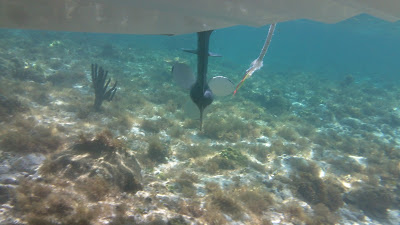 |
| My views of the coral reef
Pacific Red Lion Fish |
I’m happy to report that last week, despite malfunctioning equipment and needing to repeatedly tell my family to chill out and let me go at my own pace, I did get back into snorkel gear and swam atop a pristine coral reef in the Caribbean–albeit very close to our guide’s boat. It took a few minutes for me to adjust my breathing, as my brother had explained is normal (normalizing stuff always makes me feel better). I also needed to make sure my kids were being well taken care of by their father and a guide, so I could calmly explore on my own. But once I gained comfort in my new underwater surroundings, I marvelled at the sea life all around me. Schools of fish swimming right up to my mask to say “Hello!” and grab some of my offerings of food. Stingrays gliding by, thank you very much. And the serene coral beds waving their friendly, albeit deceptive, greetings. The salt to water content in this particular ocean playground is so high, it was easy just to float and relax both my body and mind–a big part of offsetting panic. In fact, I gained so much confidence facing my fear that I even decided to take on another courage challenge and held a couple of alligators that same week.
That’s how facing our fears works, you see, with each new challenge we conquer the more we make friends with fear and gain courage!
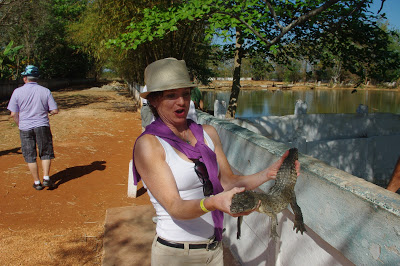 |
| Me and a two-month old gator |
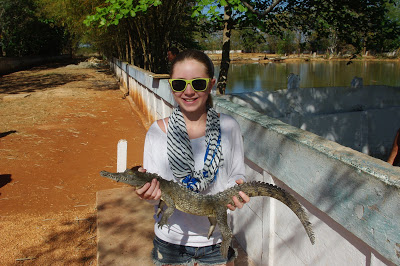 |
| My “much more confident, relaxed” daughter with the same gator |
What fear do you want to make friends with and grow a little courage along with me in 2012? What about your son or daughter?

 I was in the
I was in the  So, a few weeks ago in the midst of an East Coast winter storm, the
So, a few weeks ago in the midst of an East Coast winter storm, the 



